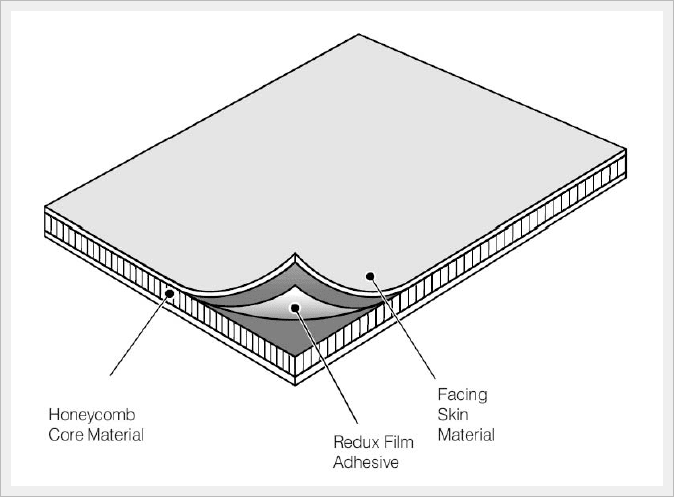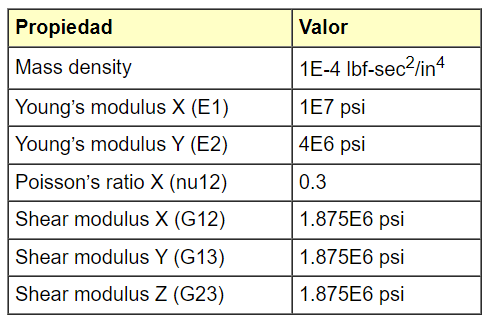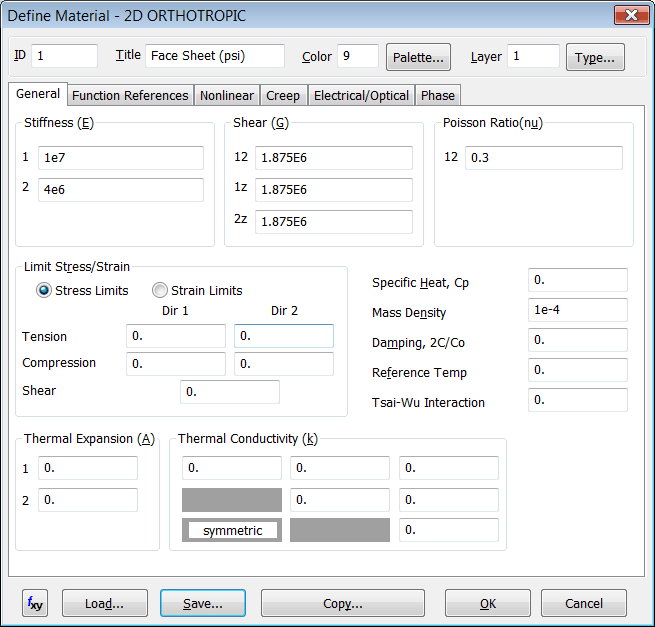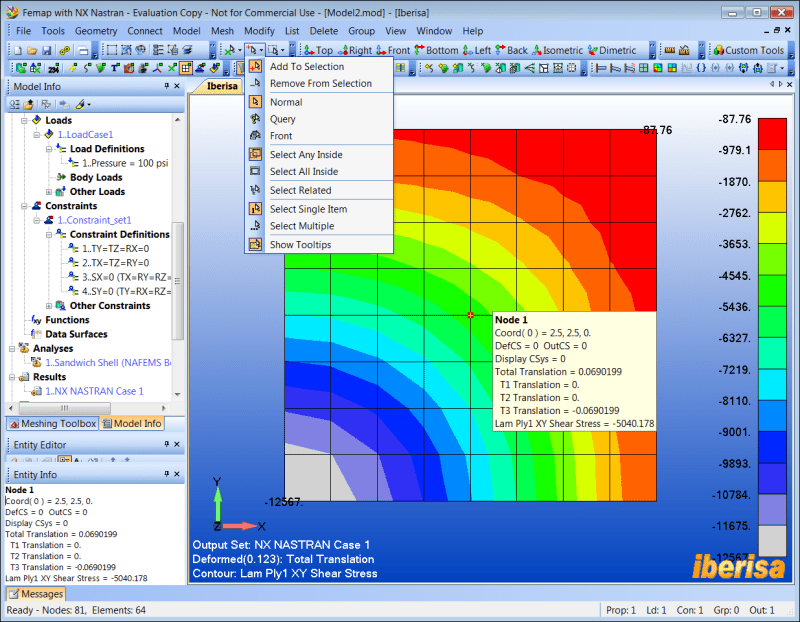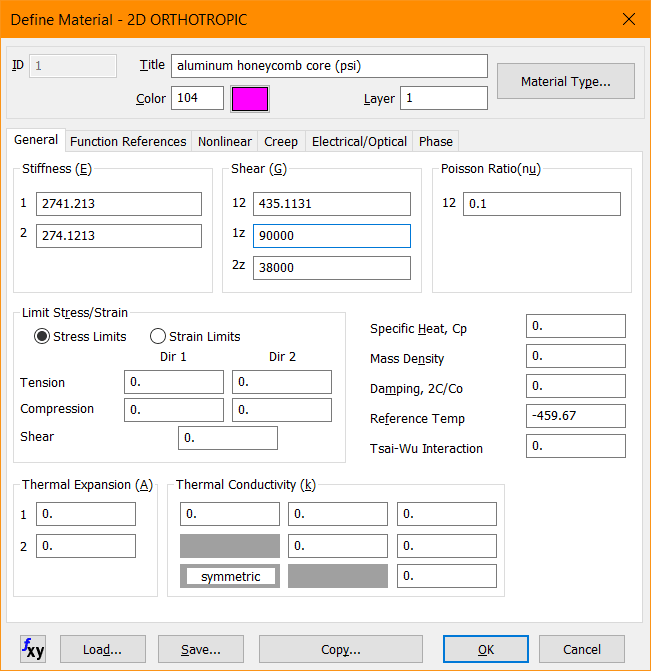Dear friends FEM FEMAP HONEYCOMB CORE
I have a question about filling up the Material property Tab in Femap. Let’s say we have honeycomb aluminum core sandwiched between the two thin aluminum face sheets. I understand that the core material in a honeycomb sandwich panel can be modeled as a 2D-Orthotropic Material Type. (Mind you I,m not addressing the face sheets which are modeled as an isotopic aluminum material). When you open the 2D-Orthotropic material type you get the the tab (please see attached picture). Now the material property Specs that is usually given by the manufacture of the aluminum Core is as follows:
Plate Shear Modulus:
L direction 90 ksi
W direction 38 ksi
Plate Shear Strength:
L direction 460 psi
W direction 300 psi
Bare Compression Modulus:
220 ksi
Bare Compression Strength:
770 psi
Nominal Density:
5.7 lb/ft^3
Now my question is where these values , specially the shear moduli and should go in the 2D-Orthotropic material Tab in Femap (picture Attached).
I really be grateful if someone has experience with this can help me.
Cheers!
I have a question about filling up the Material property Tab in Femap. Let’s say we have honeycomb aluminum core sandwiched between the two thin aluminum face sheets. I understand that the core material in a honeycomb sandwich panel can be modeled as a 2D-Orthotropic Material Type. (Mind you I,m not addressing the face sheets which are modeled as an isotopic aluminum material). When you open the 2D-Orthotropic material type you get the the tab (please see attached picture). Now the material property Specs that is usually given by the manufacture of the aluminum Core is as follows:
Plate Shear Modulus:
L direction 90 ksi
W direction 38 ksi
Plate Shear Strength:
L direction 460 psi
W direction 300 psi
Bare Compression Modulus:
220 ksi
Bare Compression Strength:
770 psi
Nominal Density:
5.7 lb/ft^3
Now my question is where these values , specially the shear moduli and should go in the 2D-Orthotropic material Tab in Femap (picture Attached).
I really be grateful if someone has experience with this can help me.
Cheers!

